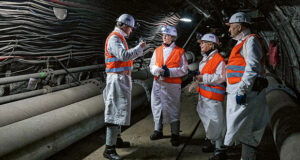
Fig. 1. Development of primary energy consumption in Germany in 2021 – changes in percent. Total: 12,193 PJ or 416.1 Mtce. Source: AG Energiebilanzen
In 2021, energy consumption in Germany reached 12,193 PJ or 416.1 Mtce (Figure 1). This is a rise of 2.6 % compared to the previous year. However, the Working Group on Energy Balances (AG Energiebilanzen), Berlin/Germany, states energy consumption is still noticeably below pre-Covid levels which indicates that energy and overall economic development in Germany is still heavily affected by the Covid-19 pandemic and its consequences.
Factors in favour of increased consumption in 2021 included the economic recovery as well as the cooler weather conditions compared with the previous year. Overall economic performance increased by roughly 2.4 %. During the last quarter of the year, however, almost no more impacts based on economic development could be observed on energy consumption since supply bottlenecks, a weakening construction trajectory and the running out of catch-up effects led to a stagnation in the economic recovery. The increase in primary energy consumption (PEC) was seriously impacted by significantly cooler outdoor temperatures compared with 2020. When adjusted to take account of the weather, the AG Energie-bilanzen calculates that energy consumption would only have risen by 0.6 %.
According to the AG Energiebilanzen’s estimation, the energy markets’ price trend in the year now ending led to a significant drop in consumption. In particular, the prices of natural gas and crude oil rose very sharply compared with the previous year. The price of CO2 emission certificates more than doubled compared with the previous year and reached historic levels towards the end of the year. The higher energy and CO2 prices have, according to the AG Energiebilanzen, noticeably curbed the growth-based increase in PEC.
In 2021, mineral oil consumption decreased by a total of 5.1 % to 3,877 PJ (132.3 Mtce). The proportion of mineral oil as part of PEC decreased to 31.8 % (34.4 % previous year). The consumption of petrol rose slightly by 0.6 %, while diesel consumption declined by 1 %. Sales of light heating oil dropped by approximately 27 %, since many consumers used up their stock after prices rose. Sales of aviation fuel rose sharply by almost 22 % and supplies of petroleum to the chemicals industry increased by 12.4 %.
The consumption of natural gas in 2021 increased by 3.9 % to 3,258 PJ (111.2 Mtce). This development was mainly due to the much cooler and mostly less windy weather in the first five months of the year, which meant that more natural gas was used to generate heat and electricity. From the middle of the year onwards, price increases resulted in a wider variety of energy sources being used to generate heat and electricity. The proportion of natural gas as part of total PEC rose slightly from 26.4 to 26.7 %.
Coal consumption in 2021 increased by 17.9 % and peaked at 1,052 PJ (35.9 Mtce). The use of coal in power stations, which makes up roughly half of total consumption, increased by approximately 25 %. The iron and steel industry increased their demand by 13 %. Using coal in power stations was supported by the rise in prices of competing energy types as well as the lower rate of wind energy being generated due to the weather. These economic effects led to this energy source profiting from sales to the steel industry. The percentage of coal in overall PEC increased from 7.5 to 8.6 %.
Lignite consumption increased by 18 % to 1,130 PJ (38.6 Mtce), yet remained about 3 % below comparative values from 2019 and is thus is still following the long-term trend. Last year’s growth is mainly due to the fact that the high level of energy supplied from wind turbines in the previous year due to the weather conditions was much lower in 2021 and due to the different competitive situation on the energy market. The proportion of lignite as part of PEC was 9.3 % in 2021 (8.1 % previous year).
Nuclear energy recorded an increase in electricity production in the reporting period by 7.2 %. The contribution of nuclear energy to PEC rose to 753 PJ (25.7 Mtce). Using the full capacity of nuclear power stations was supported in Germany by greater demand for electricity, less electricity being generated by renewables and the rise in the prices of energy and CO2. As part of the push to stop using nuclear energy, the power plant units Grohnde, Brokdorf and Gund-remmingen C are due to be shut down by the end of 2021 with a combined energy generation performance of 4,000 MW. In 2021, the proportion of nuclear energy as part of total energy consumption was 6.2 % (5.9 % previous year).
The contribution made by renewable energy sources to the PEC dropped slightly in 2021 by 0.2 % to 1,962 PJ (66.9 Mtce). The proportion of renewables as part of PEC reached 16.1 % in 2021 (16.5 % previous year). Biomass, which makes up more than 50 % of renewable energy, recorded an increase in consumption of 4 %. Hydroelectric power plants increased by 5 %. In contrast, on-shore wind power decreased by 11 % and off-shore wind power decreased by 9 %. Energy generation from photovoltaic systems rose by almost 5 %.
In 2021, again more energy was supplied abroad than was imported into Germany. Overall, the electricity exchange balance dropped to 20,440 GWh (73.6 PJ). The main reasons for this development are a drop in the amount of power generated by renewable energy sources and higher CO2 prices.
In terms of energy-related CO2 emissions, the AG Energiebilanzen is anticipating a rise of roughly 4 % or around 25 Mt for the year 2021 as a whole. Besides the weather- and economy-related increases in energy consumption, the slight decrease in the proportion of total consumption supplied by renewables is also of significance for this estimation. In terms of electricity generation, the drop in wind power was mostly compensated for through the secure supply from coal and lignite power plants for competitive reasons. (AG Energiebilanzen/Si.)


